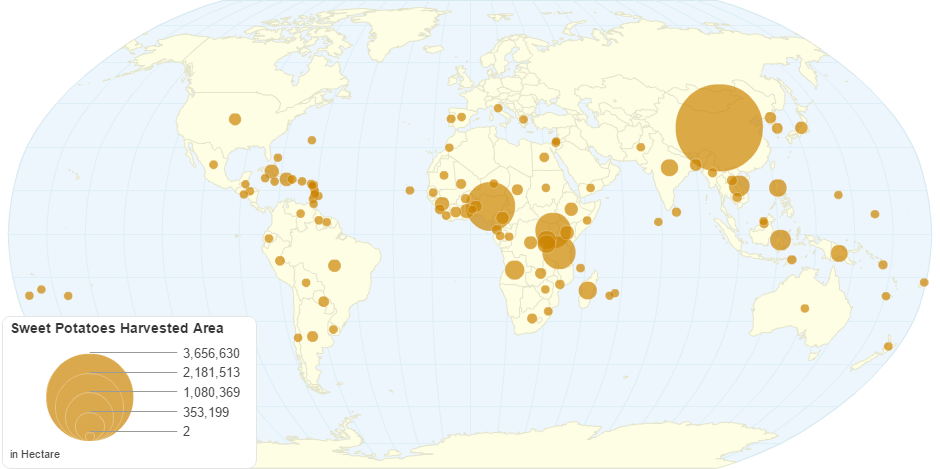This chart shows Sweet Potatoes Harvested Area by Country.
The sweet potato is a dicotyledonous plant that belongs to the family Convolvulaceae.Its large, starchy, sweet-tasting, tuberous roots are a root vegetable.The young leaves and shoots are sometimes eaten as greens. Ipomoea batatas is native to the tropical regions in the Americas. Of the approximately 50 genera and more than 1,000 species of Convolvulaceae, I. batatas is the only crop plant of major importance—some others are used locally , but many are poisonous.
The sweet potato is only distantly related to the potato and does not belong to the nightshade family Solanaceae; the Solanaceae are, however, part of the same taxonomic order as sweet potatoes, the Solanales.The genus Ipomoea that contains the sweet potato also includes several garden flowers called morning glories, though that term is not usually extended to Ipomoea batatas.
sweet potatoes are rich in complex carbohydrates, dietary fiber and beta-carotene , while having moderate contents of other micronutrients, including vitamin B5, vitamin B6 and manganese. When cooked by baking, small variable changes in micronutrient density occur to include a higher content of vitamin C at 24% of the Daily Value per 100 g serving.
Sweet potato varieties with dark orange flesh have more beta-carotene than those with light-colored flesh, and their increased cultivation is being encouraged in Africa where vitamin A deficiency is a serious health problem. A 2012 study of 10,000 households in Uganda found that children eating beta-carotene enriched sweet potatoes suffered less vitamin A deficiency than those not consuming as much beta-carotene.
9 years ago

